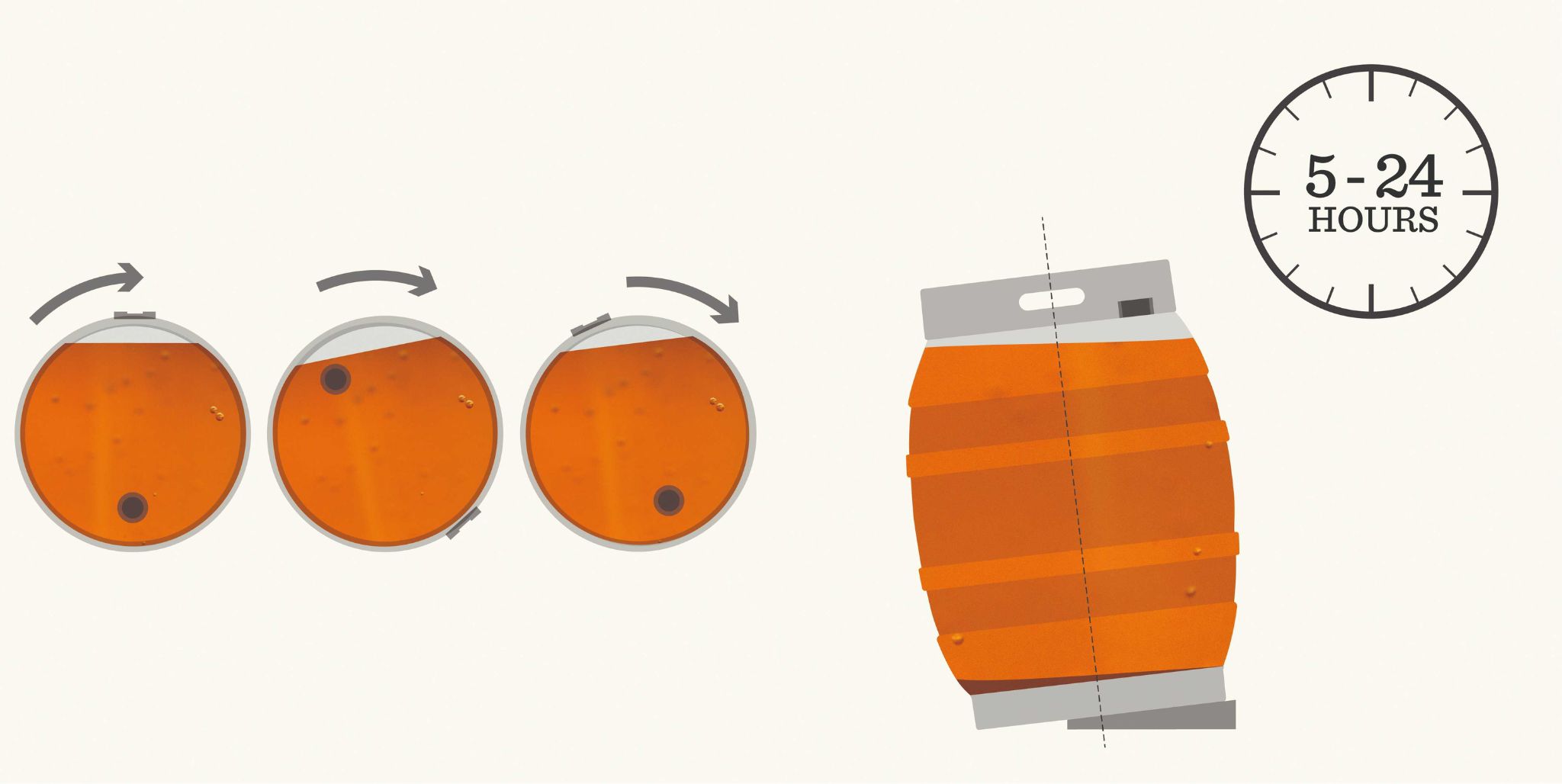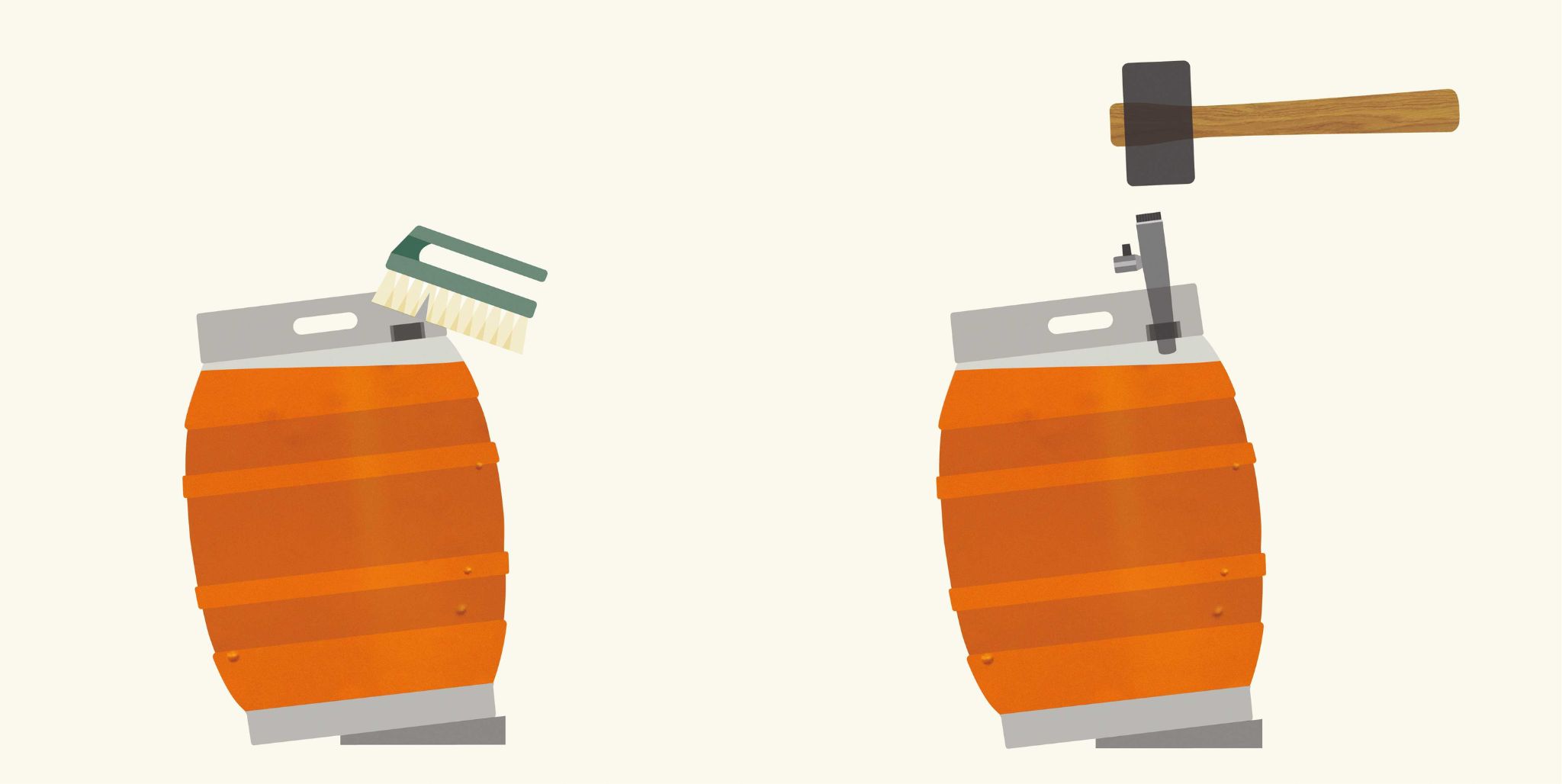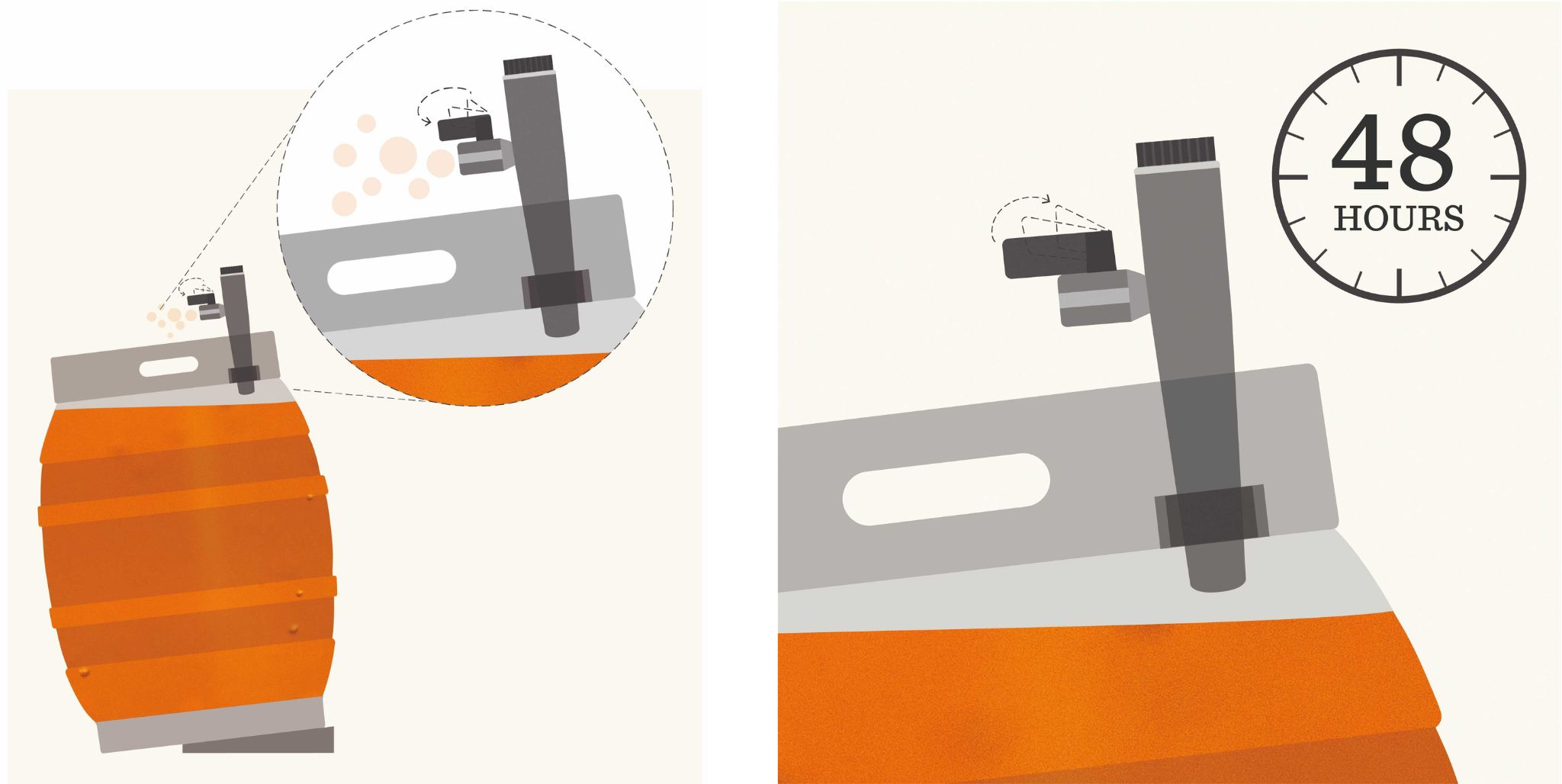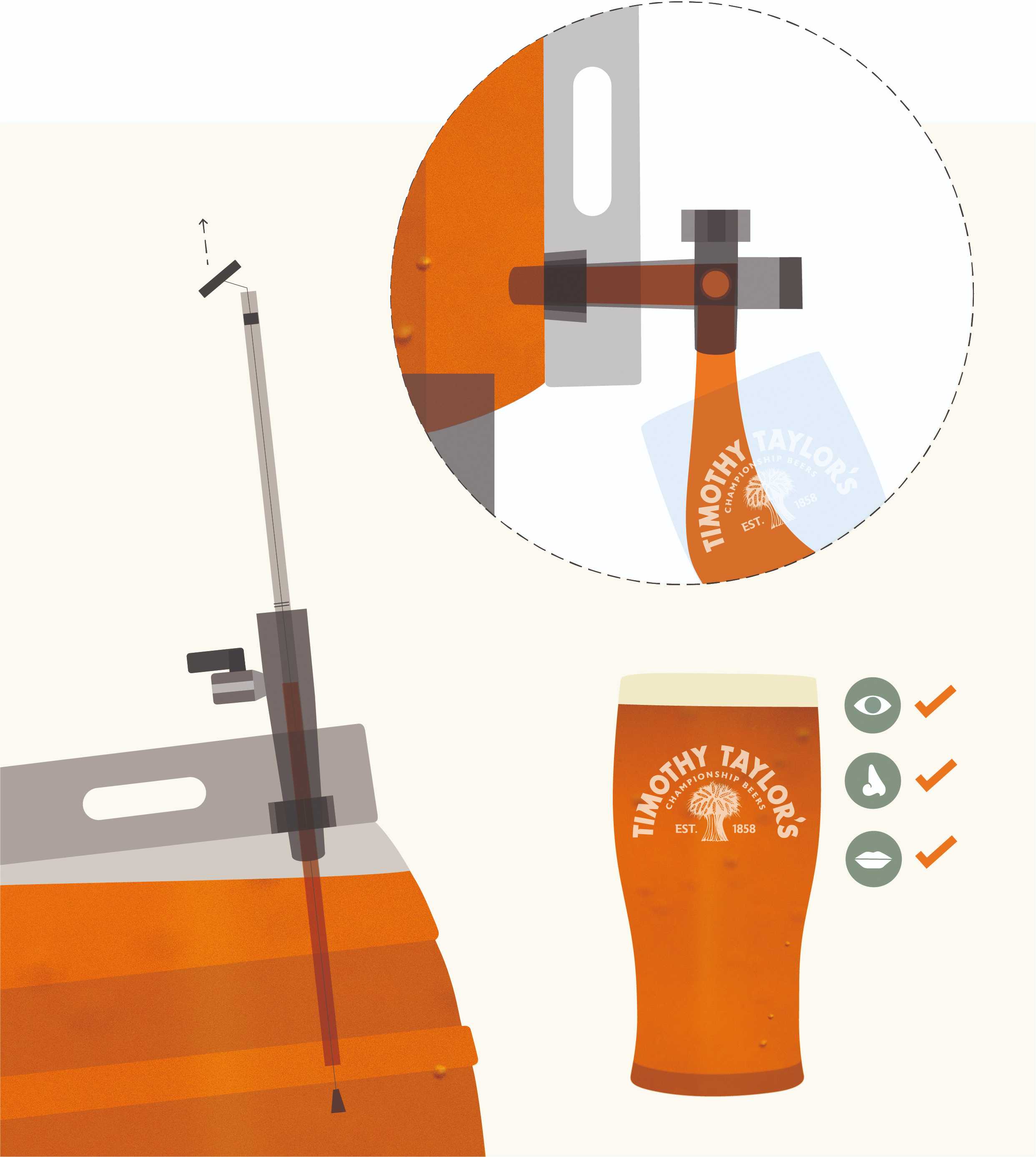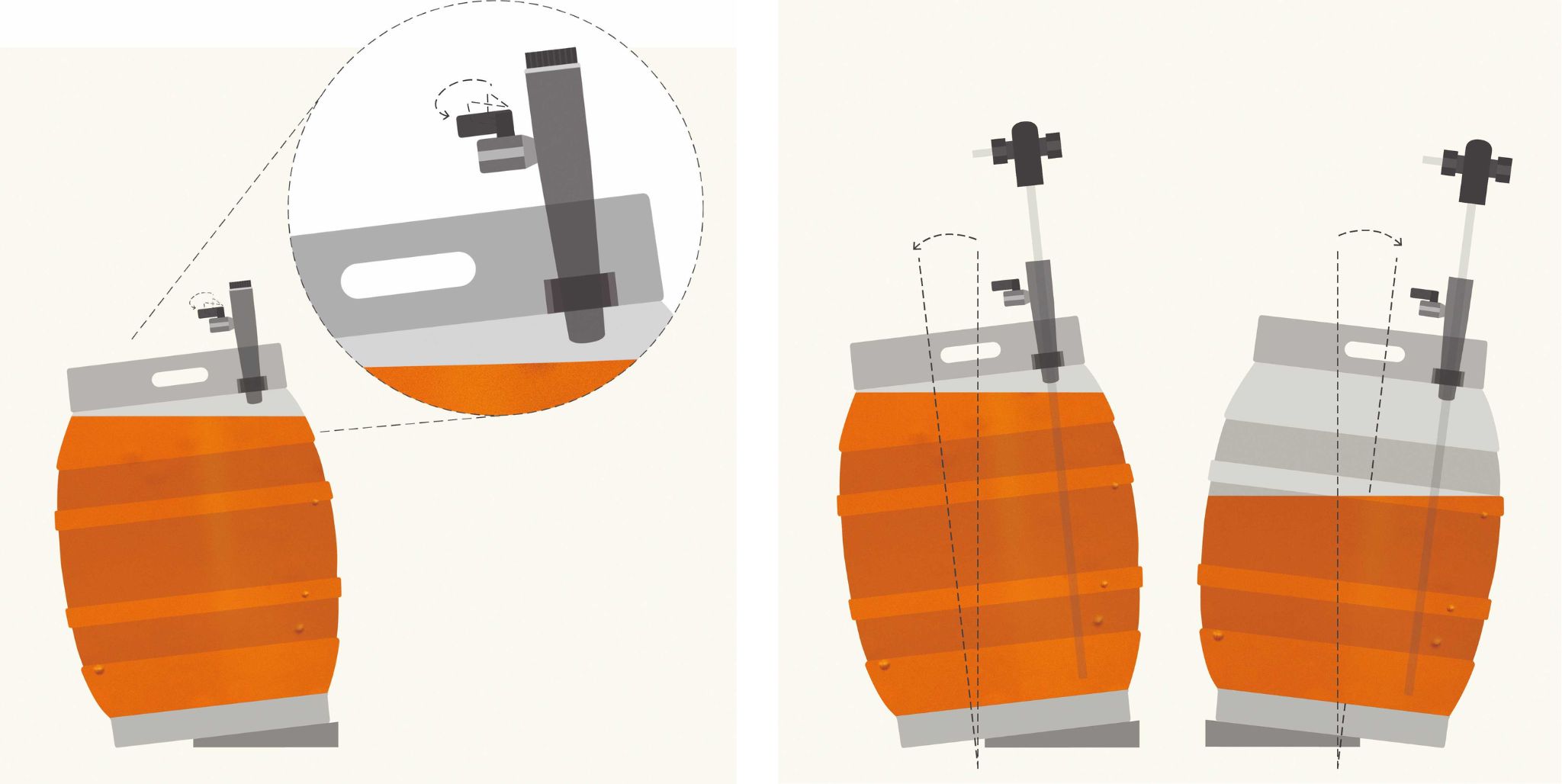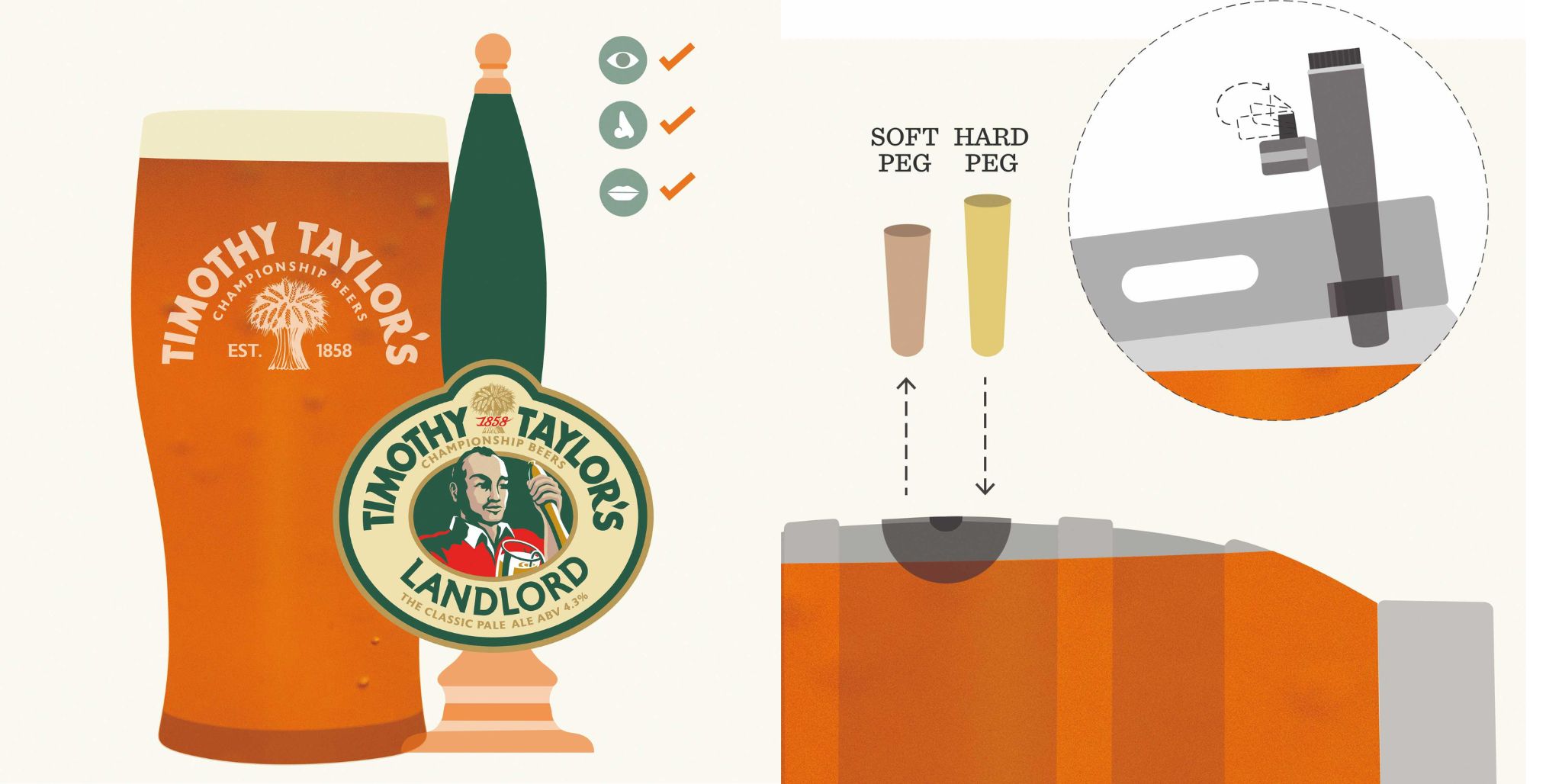Vertical – Conditioning
Check the beer every 6 hours until fermentation and conditioning are complete.
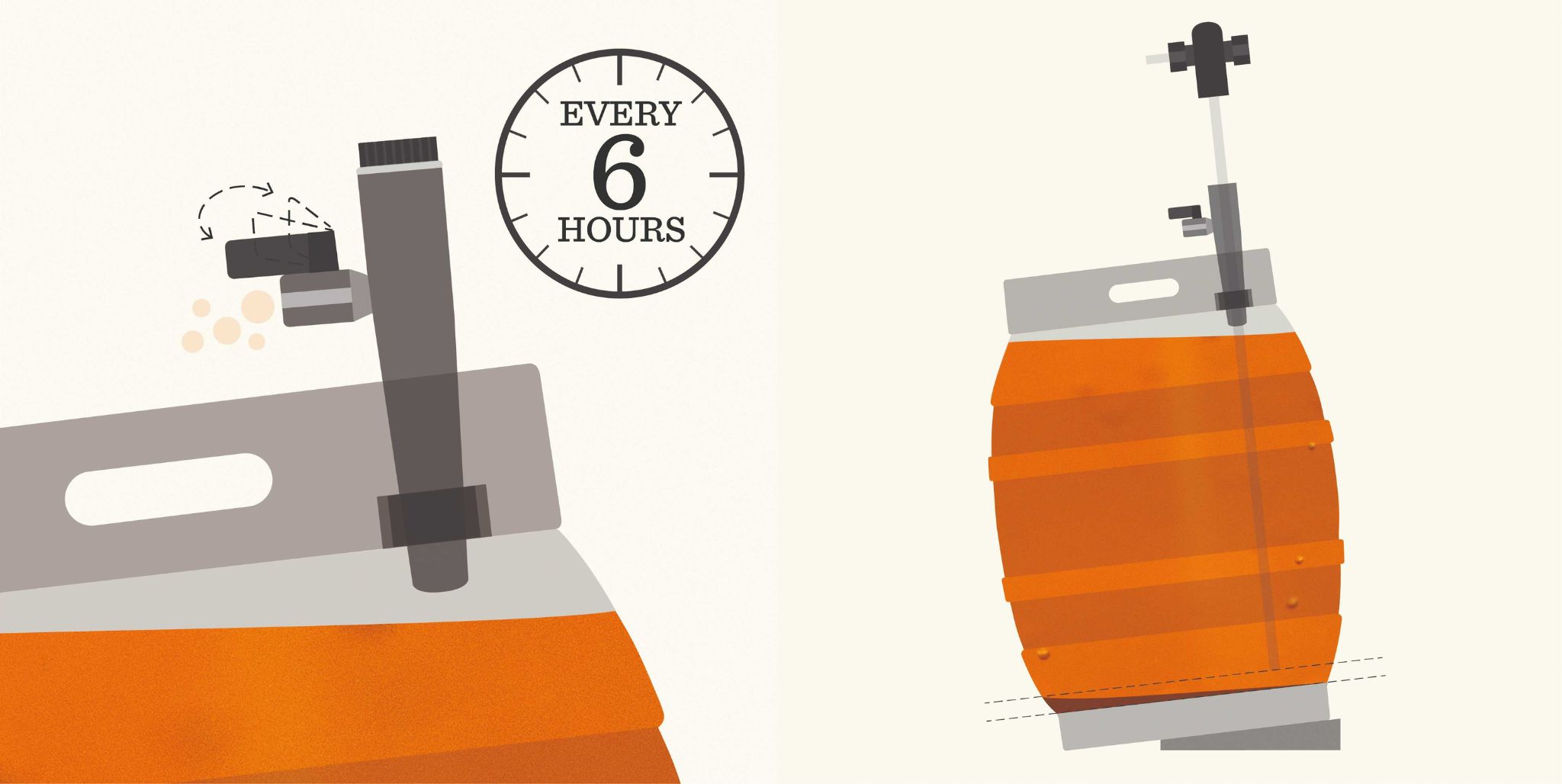
After 6 hours, open the valve to check if there is still a hiss of carbon dioxide which would mean the beer is still conditioning.
Continue this process every 6 hours until there is no hiss of carbon dioxide being released, this means the beer is conditioned.
Once conditioned, close the vent. The beer is now ready to be connected and go on sale.
Ten Day Rule: Once conditioned, beer can be left sealed for up to 10 days before it needs to go on sale (remember it must always be sold within its best before date).
Next we remove the blanking cap where the extraction kit will be inserted and insert our extraction rod or flexible extractor (again, making sure the equipment is clean).
With the extraction rod, ensure you position the end of the rod just above where we expect the sediment to settle, which should be about 2–3 centimetres from the bottom, roughly
a thumb's width.
